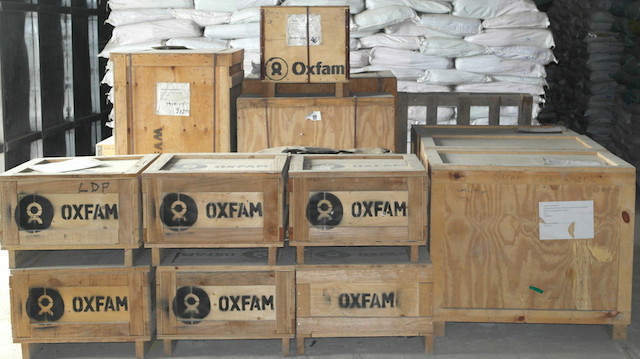Philippines Typhoon Hagupit
Oxfam is on the ground. Its rapid assessment teams, with experts in livelihoods, water and sanitation, protection and gender are being deployed in affected areas. Oxfam Canada has pledged funds to support humanitarian work in the wake of Typhoon Hagupit.
Oxfam is on the ground with emergency assistance
Typhoon Hagupit first hit land as a category 3 typhoon on December 6, 2014. It struck the far eastern island of Samar with winds of 210km/h (130mph) - making it the most powerful storm to hit the Philippines this year.
While Typhoon Hagupit was not as strong as initially feared, damage has been extensive in many hard hit areas along its path.
Oxfam rapid assessment teams are on the ground in several affected areas, including Leyte, Eastern Samar, Northern Samar and Western Samar. They have begun providing life-saving emergency assistance. Oxfam is coordinating assessment and response efforts closely with government and humanitarian partners.
The storm caused widespread damage to the Eastern Visayas region, particularly Samar Island, as well as Masbate island in Bicol region before weakening further to become a tropical storm prior to reaching Batangas and southern Luzon. It moved into the West Philippine Sea on December 11, 2014.
Oxfam Canada has pledged funds to support humanitarian work in the wake of Hagupit. With your help, we can rush more life-saving aid to families in need and, when the worst is over, help them get back on their feet. Please donate to Oxfam Canada's Emergency Response Fund today.
We have seen in this crisis that disaster preparedness saves lives. Over one million people were evacuated to safety.
Typhoon Hagupit, known locally as Ruby, hit a region still recovering from the destruction caused by last year’s super Typhoon Haiyan. Haiyan decimated the central region of the archipelago, killing more than 7000 people and forcing 4 million people to leave their homes.
Better preparedness and early warning has resulted in a lot less suffering from this typhoon. This year, the Philippines government led one of the world’s largest peacetime evacuations. This massive pre-emptive evacuation of communities in the Typhoon’s path saved lives.
Depending on the extent of the damage to homes, hundreds of thousands of women, men, girls and boys will need support in the coming days. Oxfam remains concerned about the situation of those still struggling to recover from last year’s typhoon.
As part of our initial response, our teams have been helping to ensure that affected communities have access to safe drinking water and that no major disease outbreaks occur. Assistance thus far includes:
- 8000 hyposol water purification units and 4,000 hygiene kits are being distributed in the northern part of Eastern Samar
- 1,000 hygiene kits donated to Solidarités International for distribution in Western Samar
- 6 water bladders and 6 tap stands, along with technical support for installation, for municipalities in Western Samar.
Updated December 11, 2014
Read Neil Pancipanci's account of the storm in Tacloban. Neil is an Oxfam Livelihoods Officer based in the Philippines.
Oxfam Canada's Emergency Response Fund (ERF) enables us to provide timely, appropriate responses to emergency situations and support reconstruction work. The ERF ensures that Oxfam can quickly respond wherever and whenever the need is greatest.
